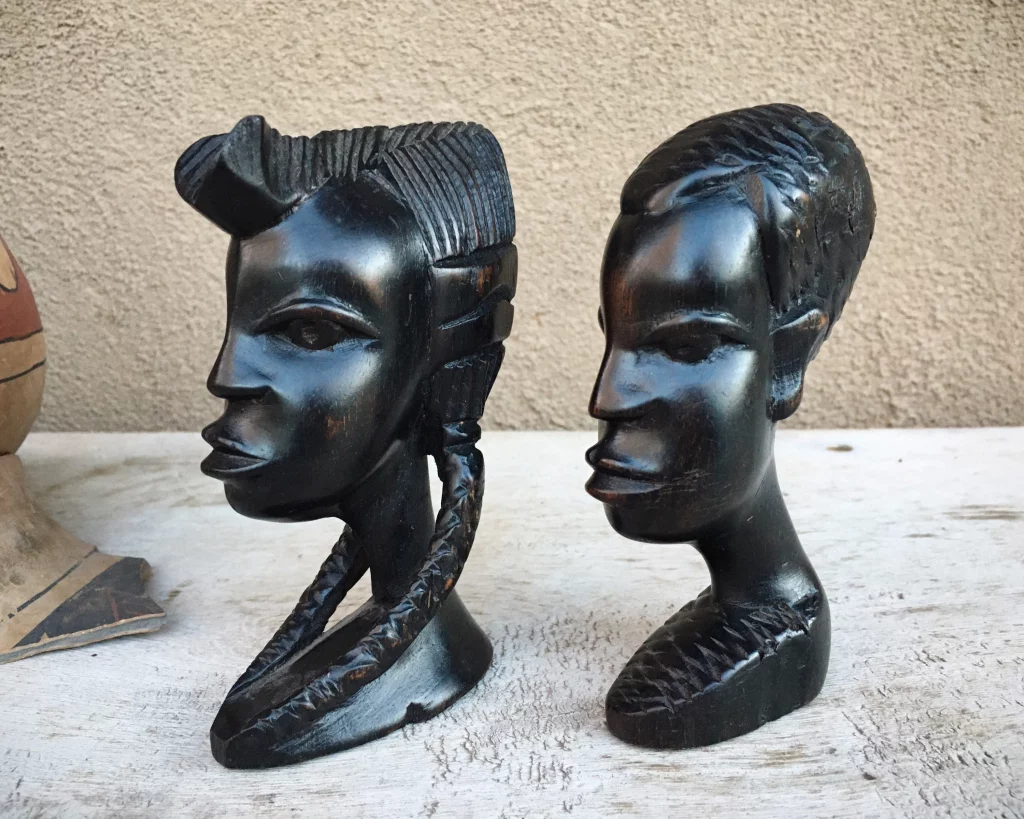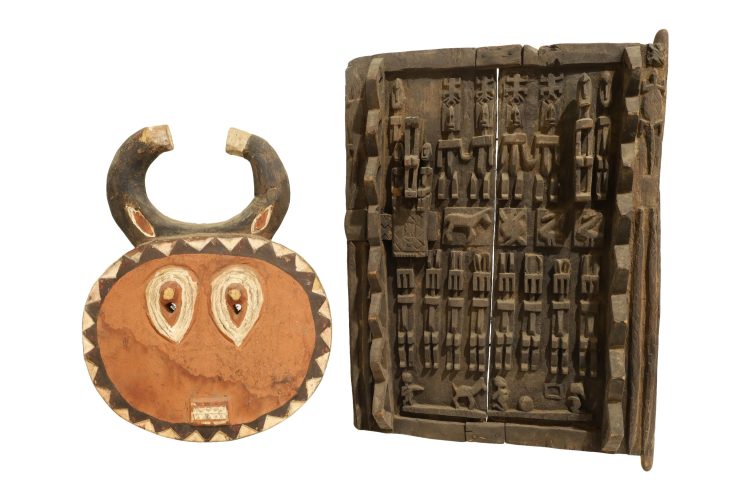A Timeless Tradition
From the heart of the African continent emerges a captivating art form that has garnered global attention: African wood carving. In this vast land where nature intertwines with culture, ordinary pieces of timber are transformed into vibrant artworks, each resonating with deep respect for nature and an ardent love for life. Among these creations, black wood carvings stand out for their exquisite beauty and rich symbolic significance, showcasing the intricate craftsmanship and profound cultural narratives they embody.
Rooted in Everyday Life
Wood carving is not merely an artistic pursuit; it is a profound tradition woven into the daily lives of countless African communities. Countries across Africa boast a rich heritage of wood sculpture—none more so than in the bustling markets of Nairobi, Kenya, home to one of the continent’s largest wood carving bazaars. As I meandered through the market, immersed in a sea of extraordinary creations, each carving seemed to whisper ancient tales of tribal legends.
The history of African wood carving stretches back thousands of years, serving as a testament to the continent’s vibrant culture. This art form is intricately linked with the spiritual practices and everyday rituals of local communities. In many indigenous tribes, wood carvings are not just decorative; they hold ceremonial significance, aiding in religious rituals and connecting the tangible world with the divine.
Exaggeration as Expression
The styles of African wood carving are as diverse as the continent itself, each region and tribe showcasing distinct characteristics in their artistic expressions. In West and Central Africa, artists commonly explore the relationship between humans and nature, frequently employing exaggerated forms to convey deeper meanings. My visits to wood carving markets in Benin, Gambia, Senegal, and the Republic of Congo revealed a preference for utilizing whole tree trunks or roots. Artisans do not strive for mere realism; rather, they focus on abstract representations that encapsulate the essence of life.
For instance, a sculptor may depict a human eye as a mere hollow or expansive hole, seemingly spontaneous, yet inviting the viewer to perceive a deeper insight into the world. A mouth might be portrayed as an unrefined cut, yet it resonates with the narrative of ancient stories waiting to be told. The noses of figures often take on simple geometric shapes, embodying a raw aesthetic beauty. This audacious approach to artistry strips away detail to forge a connection with the vibrant life force that flows through the veins of the people.

The Bakuba people of the Congo River basin exemplify exquisite wood carving techniques characterized by realism. Their sculptures are lively and detailed, reflecting the rich cultural heritage they represent. Historically, the Bakuba’s nobles revered wood carving as a prestigious art form, fostering its development and ensuring its continuity through generations. Today, Bakuba wood carving still thrives, attracting art enthusiasts from around the globe eager to witness and appreciate its allure.
The Allure of Black Wood Carvings
Among the myriad of African wood sculptures, black wood carvings command particular reverence, celebrated for their rich tones and masterful craftsmanship. Carved primarily from ebony, a material prized for its density, fine grain, and even color, black wood offers ideal qualities for sculpture.
Crafting these pieces requires immense skill and dedication; artisans wield axes, chisels, and knives to etch intricate designs onto the surface. The hardness of ebony makes this task demanding, necessitating patience and a mastery of various techniques. Each black wood sculpture is imbued with an aura of life, echoing stories of joy, sorrow, and cultural resilience.
The subjects of black wood carvings are diverse, ranging from deities and ancestral figures from mythology to animals and human portraits observed in everyday life. Each creation is a vivid narrative, expressing the African people’s relationship with nature and the profound experiences that shape their existence. This art form is not only a testament to artistic ingenuity but also a conduit through which the wisdom and creativity of the African spirit shine through.
The Magic of Finish and Functionality
Black wood carvings possess a unique “oily” quality; over time and with touch, their surfaces become smoother and more refined, radiating a captivating luster. This inherent characteristic ensures that the sculptures endure, standing the test of time while drawing admiration from those who encounter them.
In local lore, black wood carvings are said to encapsulate the tears of Mother Earth, believed to carry powers of healing and protection. In some Central and West African tribes, chiefs and spiritual leaders utilize these carvings in ceremonial masks and totem poles during rituals, invoking blessings for bountiful harvests and favorable weather.





















